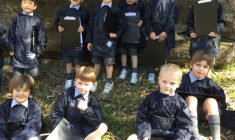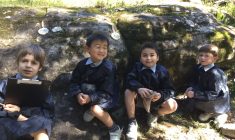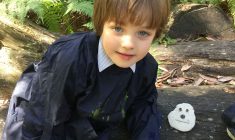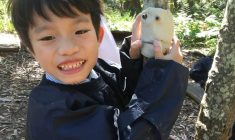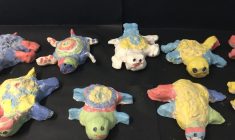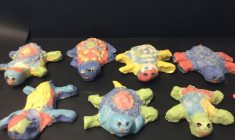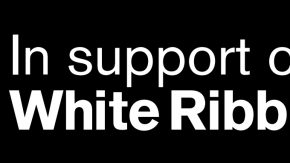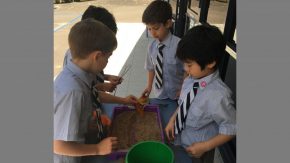Kindy Art – Clay work
Kindergarten have just completed a Unit of Inquiry that explores materials and their properties. In Art, the boys have had the opportunity to use clay as a basis for their discoveries. The boys collaborated on what they knew about clay before venturing out to the bush classroom to make our clay forest faces.
To help the boys understand how clay changes over time and how it’s properties transform, we made forest faces with clay and found natural materials to decorate them (gum nuts, leaves, twigs, even a feather!). Our clay faces were left for a few weeks before returning to see how they had changed. There was excitement all round when discovering how their clay faces had evolved.
Our exploration into clay continued in the art room, and the boys were set with the mission of working out how two pieces of clay can be joined to each other. After trialing different techniques and sharing these with each other, the scratch and wet technique was introduced as the method used by sculptors to stop clay joints falling apart in the kiln.
We experimented with this joining technique when making our clay turtles. Tools were introduced to manipulate the surface and create texture. After a bisque fire, glaze was added. Our clay turtle sculptures are now on display in the glass cabinets for all to view, however, the forest faces we left in the bush classroom did not have such a happy ending.
The Kindergarten boys have made many discoveries about clay during this Unit of Inquiry:
‘Clay dries quickly and you need water to wet it,’ Jamie.
‘It takes 3 days before it goes in the kiln,’ Hamish.
‘Clay comes from under the ground,’ Parker.
‘The water stops it from dying out,’ Jonathan.
‘It can easily break if you don’t put it in the kiln,’ Ted.
‘Clay is very squashy and flexible,’ Damon.
‘It goes hard after you get it out of the kiln,’ Sam.
‘You can break it in half and cut it,’ William.
‘Clay can stick on trees,’ Christian. F.
‘If you put more water it will be stickier,’ Ethan.
‘You put Glaze on the clay, it is not paint, because paint will burn off,’ Jamie.
‘After it comes out the kiln it is hard,’ Oliver.
‘The kiln is so, so hot,’ Christian. H.
‘It goes up to 1000 degrees in the kiln,’ Jackson.
Kylie Bain – Art Mistress



